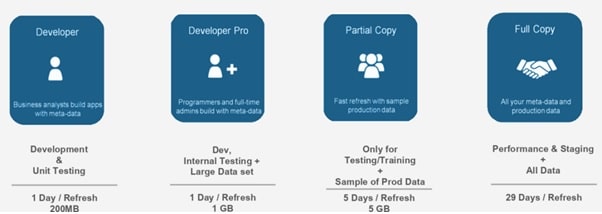Salesforce is one of the most popular CRM (Customer Relationship Management) structures within the international, imparting groups powerful gear for managing consumer relationships, income, and services. One of Salesforce’s most valuable capabilities is the capacity to use “sandboxes.” In this blog, we’ll discover what sandboxes in Salesforce are, how they work, and why they’re critical for builders and directors.
What are Sandboxes in Salesforce?
In Salesforce, a sandbox is a replica of your production surroundings. It’s a separate area where developers and admins can create, check, and adjust applications without affecting the stay manufacturing environment. Think of it as a “practice area” wherein modifications may be made correctly before being deployed to actual users.
Sandboxes are important for Salesforce development and administration because they provide a remote environment for checking out. Any modifications made inside the sandbox don’t affect the actual information, workflows, or configuration in your live system.
Why Use Sandboxes in Salesforce?
Using sandboxes guarantees that your manufacturing environment stays solid. Here are a few key blessings of using sandboxes in Salesforce:
Risk-Free Testing: Any changes may be very well examined before they’re moved to production, minimizing the risk of errors.
Training Ground: Sandboxes provide an area for new users or admins to examine and experiment without impacting the manufacturing environment.
Collaboration: Teams can paint on unique components of the machine simultaneously using distinctive sandboxes, making sure of clean collaboration.
Quality Assurance: Ensuring that code adjustments, new features, and updates work flawlessly within the sandbox environment enables in maintaining high quality in manufacturing.

Types of Sandboxes in Salesforce
Salesforce offers numerous varieties of sandboxes, each with a selected reason and capacity. Let’s smash down the exceptional sandbox kinds:
1. Developer Sandbox
A Developer Sandbox is a primary surrounding mainly used for individual development and checking out. It includes a replica of your production surrounding metadata (configuration and code) however does no longer include facts like debts, contacts, or possibilities.
Use Case: Individual improvement, small-scale checks
Refresh Interval: Once in step with the day
2. Developer Pro Sandbox
The Developer Pro Sandbox is just like the Developer Sandbox, but with greater garage capability. This makes it extra suitable for testing situations that require more statistics or more intensive testing procedures.
Use Case: Development and checking out with more facts
Refresh Interval: Once per day
3. Partial Copy Sandbox
A Partial Copy Sandbox is designed for more comprehensive checking out. It consists of both metadata and a pattern of statistics from the production environment. With a Partial Copy Sandbox, you could higher simulate actual global eventualities via the use of real statistics on your checking out.
Use Case: Integration checking out, consumer reputation trying out (UAT)
Refresh Interval: Every 5 days
4. Full Sandbox
A Full Sandbox is an entire reproduction of your manufacturing environment. It consists of each metadata and all of the facts from your stay machine. This sandbox is ideal for performance checking out, load testing, and a first-class warranty earlier than most important releases.
Use Case: Full-scale trying out, overall performance trying out, very last degree of testing earlier than deployment
Refresh Interval: Every 29 days
How to Create a Sandbox in Salesforce
Creating a sandbox in Salesforce is a trustworthy procedure. Here are the steps:
Log into Salesforce: Start by way of logging into your Salesforce instance.
Go to Setup: Click the tools icon and go to “Setup.”
Search for Sandboxes: In the Quick Find box, type “Sandboxes” and pick out it from the dropdown.
Click on New Sandbox: On the Sandboxes page, click “New Sandbox.”
Choose Sandbox Type: Select the sort of sandbox you need to create (Developer, Developer Pro, Partial Copy, or Full).
Name Your Sandbox: Give your sandbox a call that helps you become aware of its reason.
Start Copying: Click “Create” to start the copying procedure. Depending on the sandbox kind and the size of your manufacturing environment, this can take some time.
Best Practices for Using Sandboxes in Salesforce
Sandboxes are distinctly effective, but to get the maximum out of them, it’s important to comply with nice practices:
1. Refresh Sandboxes Regularly
Regularly refresh your sandbox to make certain that you’re running with up-to-date data and configurations. Different sandboxes have distinct refresh durations, so consider the way often you refresh them.
2. Plan Your Sandbox Strategy
Before creating a sandbox, consider what sort of checking out or improvement you want to do. Choose the suitable form of sandbox that suits your necessities. For instance, use a Developer Sandbox for fundamental development, however, opt for a Full Sandbox for complex testing and overall performance assessment.
3. Use Sandbox Templates
If you’re the usage of a Partial Copy or Full Sandbox, Salesforce allows you to apply sandbox templates to outline which items and records should be copied. This helps in decreasing the size of the sandbox and that specializes in handiest the records that is wanted for trying out.
4. Test Before Moving to Production
Always thoroughly take a look at the sandbox before pushing modifications to manufacturing. This consists of functional testing, user popularity testing (UAT), and cargo/overall performance checking out.
5. Collaborate Across Teams
If you’ve got more than one team working on unique capabilities or tasks, recall growing separate sandboxes for each group to keep away from conflicts. Once each person has completed their development or trying out, adjustments may be merged before being deployed to production.
6. Use Change Sets for Deployment
After trying it out in the sandbox, use Change Sets to transport your modifications from the sandbox to the manufacturing surroundings. This guarantees an easy and stable transition without disrupting your production environment.
Common Sandbox Issues and How to Solve Them
Despite their utility, you can run into a few challenges whilst the use of sandboxes. Here are common issues and answers:
1. Data Limits
Some sandboxes, along with Developer Sandboxes, do now not consist of manufacturing statistics, making it hard to simulate actual international scenarios. Solution: Use a Partial Copy or Full Sandbox when actual records are needed.
2. Syncing Issues
Sometimes the sandbox environment might also end up out of sync with the production surroundings. Solution: Refresh the sandbox often to live up to date with the today’s manufacturing configuration and records.
3. Long Refresh Times
Full Sandboxes, particularly, can take a long time to refresh due to the quantity of records they contain. Solution: Plan beforehand for refreshes, especially before important checking out or deployment stages.
Sandboxes in Salesforce provide safe and secure surroundings for development, checking out, and schooling. Whether you’re making small configuration adjustments or preparing for a large deployment, sandboxes ensure that you can make those adjustments without affecting your live gadget. By the usage of the right kind of sandbox for the venture at hand and following quality practices, you may enhance the excellence of your Salesforce implementations at the same time as reducing the risk of mistakes in manufacturing.
Whether you’re a Salesforce admin, developer, or business user, information and utilizing sandboxes effectively is vital for keeping a stable and functional Salesforce surroundings. So, next time you’re planning a massive alternate, recollect to apply your sandbox—your manufacturing environment will thank you!
